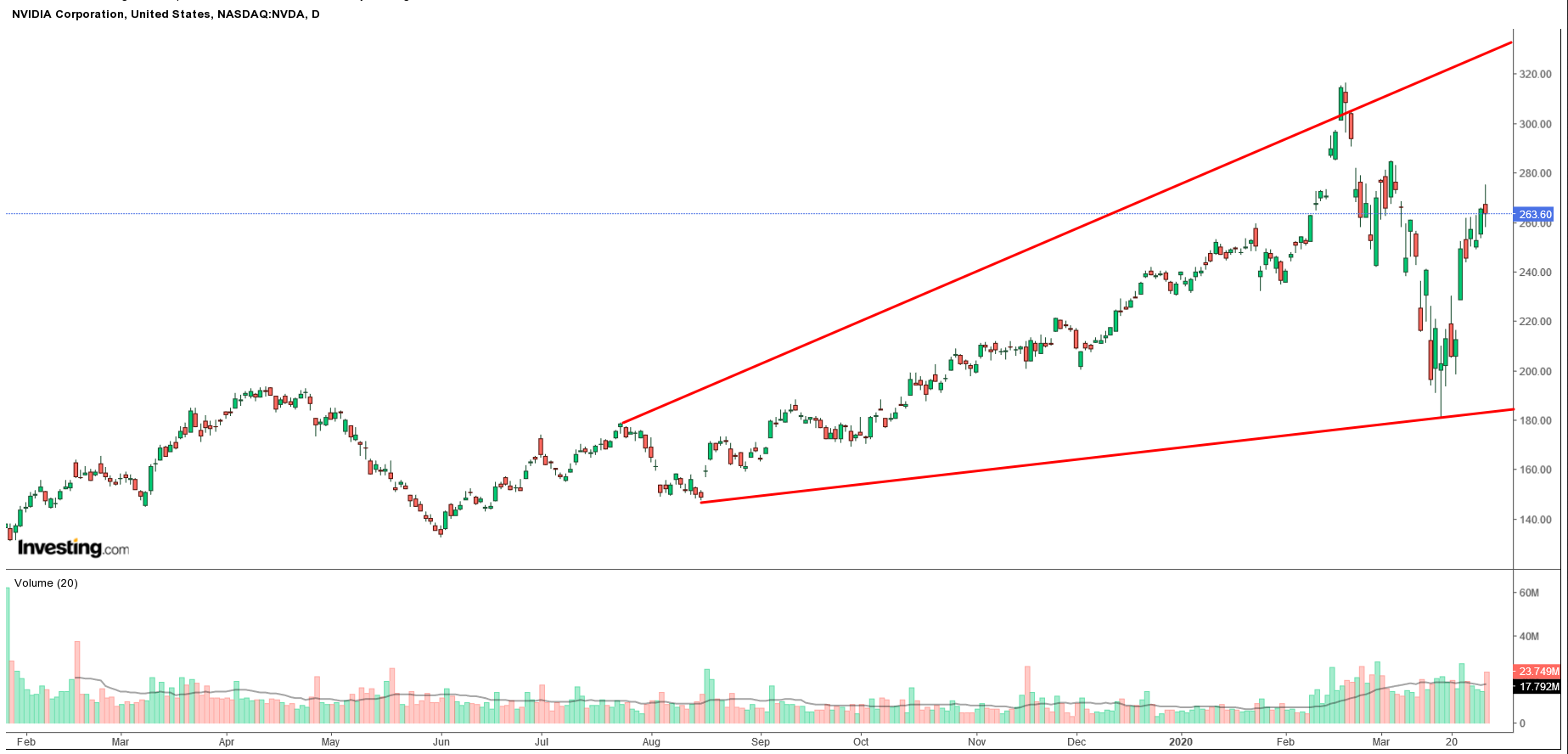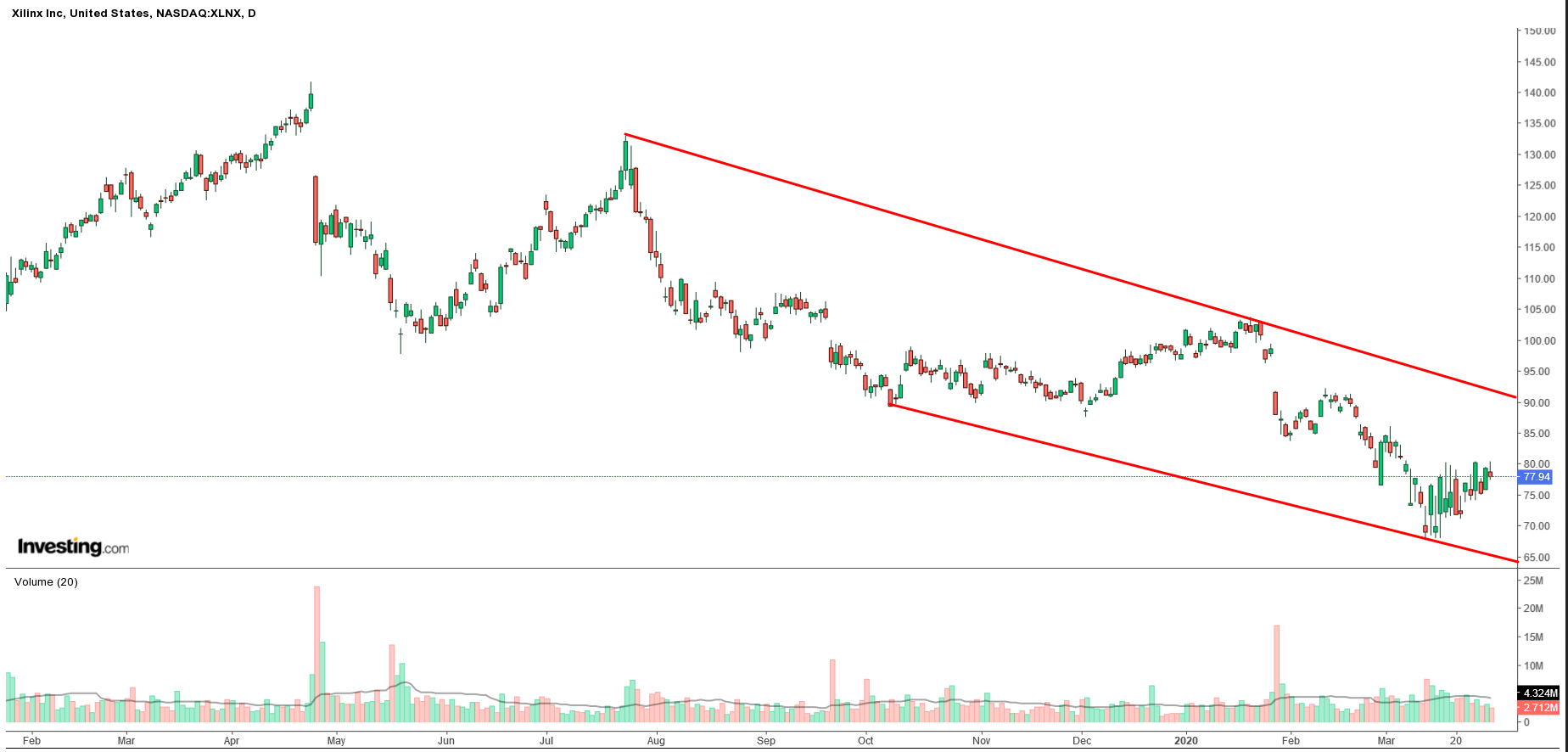After enjoying strong gains last year, semiconductor stocks took a beating as coronavirus swept the world. With the global economy on the brink of slipping into a recession, worries have mounted that chip demand will collapse.
While market participants are still struggling to understand the true extent of the damage from the fast-spreading virus on corporations and their business operations, some chipmakers are prepared to rebound once the pandemic is contained.
Three names are at the top of that list:
1. Micron
Micron (NASDAQ:MU) specializes in DRAM, or dynamic random-access memory, the type of memory chip commonly used in PCs and servers.
Shares of the Boise, Idaho-based chipmaker, which ended at $42.06 on Tuesday, have rallied 38% since hitting a 52-week low of $31.13 on March 18.
Investors have turned increasingly bullish on the company on the view that data centers will have to buy more chips to address the surging bandwidth requirements for remote work, gaming and e-commerce activities during the pandemic.
Market participants also expect Micron to sell more chips to notebook manufacturers, as more employees work from home and students enroll in virtual online classes.

On March 25, "Micron delivered solid second quarter results and revenue at the high end of the guidance range, despite the unfolding COVID-19 pandemic," said Micron President and CEO Sanjay Mehrotra. The chipmaker announced earnings per share of 45 cents on revenue of $4.80 billion, beating estimates for EPS of 37 cents on revenue of $4.69 billion.
Looking ahead to the fiscal third quarter, Micron guided EPS within a range of 40 cents to 70 cents and revenue in a range of $4.6 billion to $5.2 billion. Analysts are expecting EPS of 54 cents and revenue of $4.91 billion in the upcoming quarter.
"We will emerge from this challenging time well-positioned to capture the robust long-term demand opportunities for memory and storage," Mehrotra said.
2. NVIDIA
NVIDIA (NASDAQ:NVDA) is widely considered one of the global leaders in high-performance graphic processing units, or GPUs, which are chips used in mobile phones, personal computers, notebooks, game consoles and data centers. The semiconductor giant beat expectations for revenue and EPS for the past four quarters.
Shares of the Santa Clara, California-based corporation are up a whopping 45% since falling to their lowest levels of the year on March 18. The stock settled at $263.60 yesterday, giving it a market cap of $161.3 billion.

Besides the expected uptick in demand for its chips used in data centers, NVIDIA is likely to see a boost for its GPUs used for medical research. The company’s Parabricks GPU-accelerated genome analysis toolkit enables scientists combating the COVID-19 pandemic to work more quickly.
Needham analyst Rajvindra Gill explains:
"GPUs can accelerate the analysis of whole genomes, which consist of 3 billion base pairs in human chromosomes, from days to less than one hour."
"We expect to see a surge in demand for NVIDIA's GPUs in the medical field, particularly in DNA sequencing and drug development.
Gill upgraded NVIDIA stock to buy from hold on March 24, citing the tech company’s ability to provide critical processing power for researchers seeking solutions to COVID-19.
3. Xilinix
Shares of programmable chipmaker Xilinx (NASDAQ:XLNX), which develops various types of integrated circuits, have bounced almost 17% since hitting a 52-week low of $67.68 on March 12. The stock closed at $77.94 last night, giving it a market cap of $19.39 billion.
The San Jose, California-based company is likely to benefit from healthy sales of chips for data centers to accommodate the demand spike for cloud services. The upcoming deployment of 5G technology — the next-generation wireless revolution — will likely provide a further lift to revenue growth.

Goldman Sachs analyst Toshiya Hari upgraded Xilinx shares to buy from neutral on March 24, citing positive business trends, as the Wall Street firm recalibrated its coverage of the semiconductor sector.
Citi analyst Christopher Danely also sounded upbeat, saying in a research note on March 24, that Xilinx looks like the best "place to hide" among semiconductors amid the current coronavirus uncertainty. He notes that in past downturns, "stocks with high, sustainable gross margins such as XLNX outperformed."
Xilinix next reports earnings on April 22. Consensus calls for earnings of 67 cents per share for its fiscal fourth quarter, while revenue is forecast to total $754.6 million.
